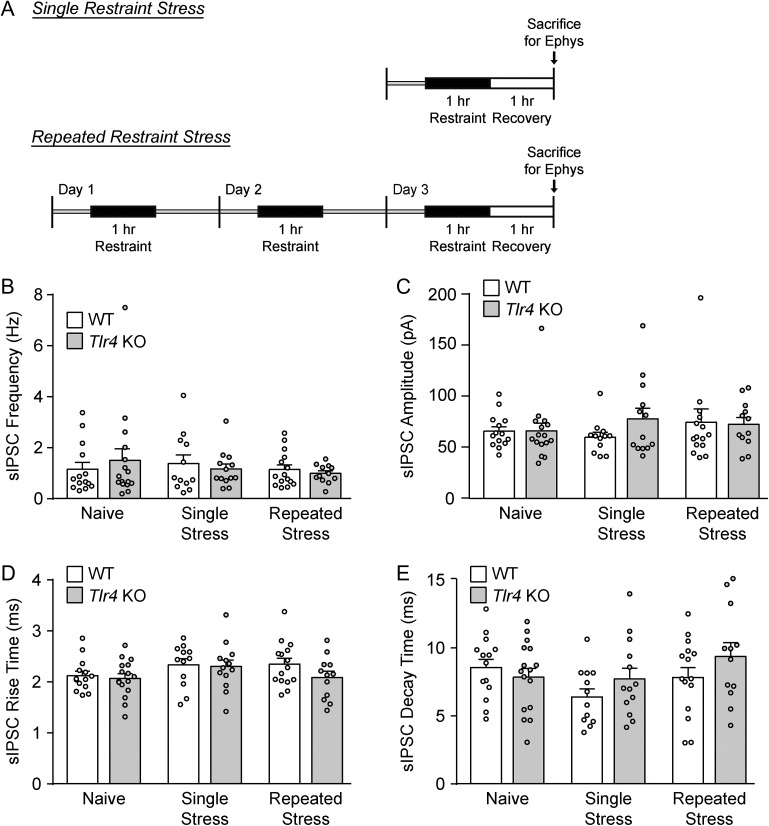Fig. 2.
Restraint stress does not alter basal GABAergic transmission in the CeA of WT and Tlr4 KO rats. (A) Diagrams illustrating the single and repeated restraint stress paradigms. (B) The basal sIPSC frequency was not affected by restraint stress. Two-way ANOVA showed no significant main effects of genotype (F(1,76) < 0.001, P = 0.98) and restraint stress treatment (F(2,76) = 0.45, P = 0.64) on the basal sIPSC frequencies in the CeA of WT and Tlr4 KO rats, as well as no significant interaction between these factors (F(2,76) = 0.56, P = 0.57). (C) Neither genotype (F(1,76) = 0.57, P = 0.45) nor stress treatment (F(2,76) = 0.41, P = 0.67) had significant main effects on sIPSC amplitudes, and there was no significant interaction (F(2,76) = 0.75, P = 0.48). (D–E) There were no significant main effects of genotype (rise time: F(1,76) = 1.72, P = 0.19 and decay time: F(1,76) = 1.46, P = 0.23) or stress treatment (rise time: F(2,76) = 2.10, P = 0.13 and decay time: F(2,76) = 2.23, P = 0.11) on the sIPSC kinetics, and no significant interactions (rise time: F(2,76) = 0.66, P = 0.52 and decay time: F(2,76) = 1.48, P = 0.24). For all data presented in this figure, the WT/single stress group comprised 12 cells from four rats, Tlr4 KO/single stress group of 13 cells from four rats, WT/repeated stress group of 15 cells from five rats, Tlr4 KO/repeated stress group of 12 cells from four rats, and the naïve data were taken from Fig. 1B–E. All data are presented as mean ± SEM.

